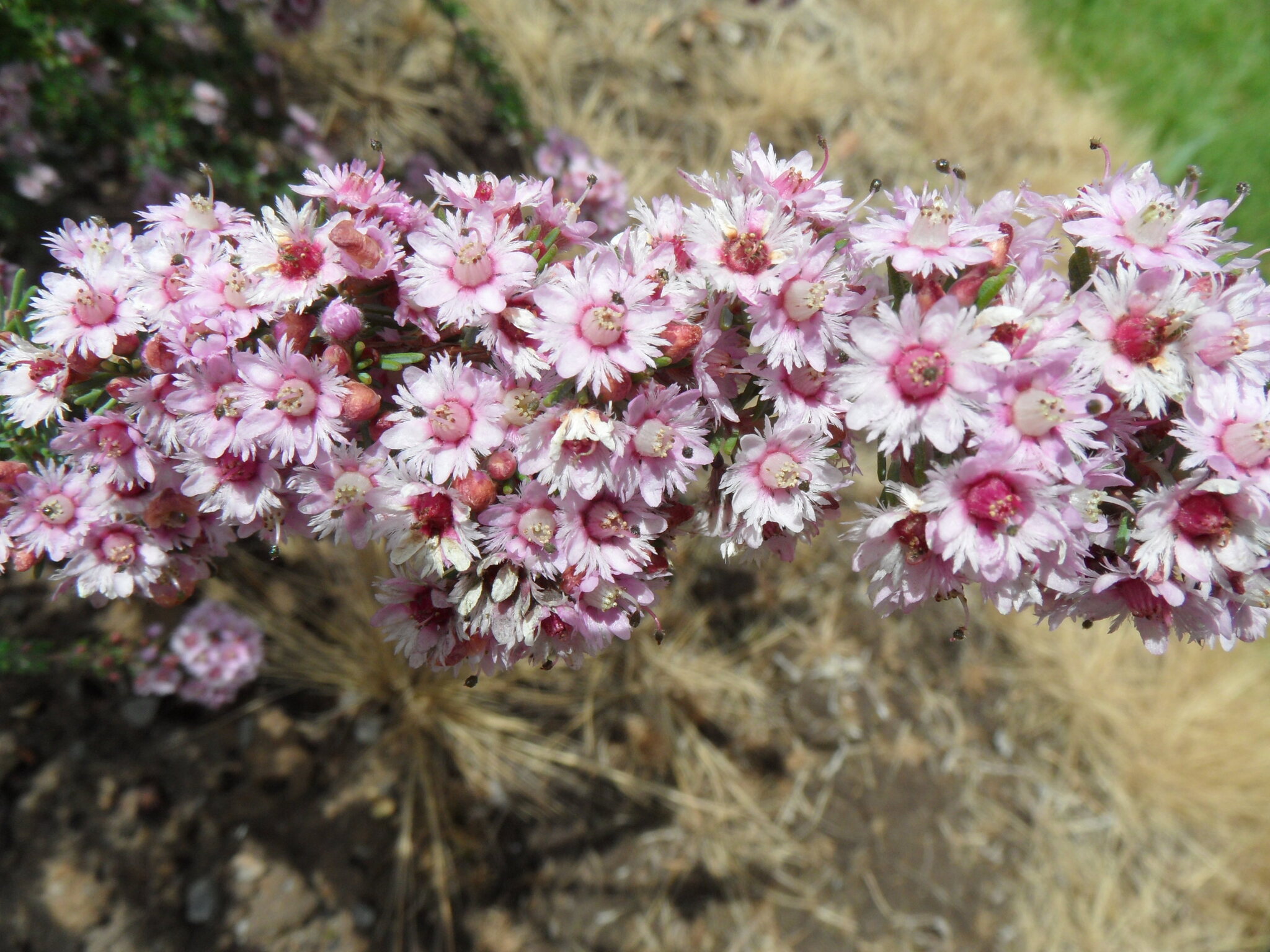
Latin verto — turn, cor — heart, a name for Venus who regarded the myrtle as sacred.
Small to large shrubs or occasionally trees. Leaves opposite, mostly small and decussate, more or less stalkless. Flower clusters leafy, solitary in leaf axils but bunched towards the branch tips. Sepals 5, mostly the same colour as the petals, deeply and finely divided and sometimes with 5 additional sepals that bend backwards. Petals 5, often toothed or deeply divided. Ovary 1-chambered. Fruit indehiscent, the tip with persistent sepals.
Grown for the attractive feathery flower clusters.
The following species are occasionally offered: V. chrysantha Endl., with yellow flowers, few together and relatively large, the petals deeply cut into 7 or so lobes and accessory calyx lobes absent; V. grandis J.L. Drummond, with bright crimson flowers with toothed petals and accessory calyx lobes not turned up at the base; V. insignis Endl., with pink flowers with ciliate petals and accessory calyx lobes that are turned up at the base; and V. mitchelliana C.A. Gardner, Rapier Featherflower, which has scarlet flowers with petals fringed at the tip, a bearded style and accessory calyx lobes turned up at the base.
About 100 species from WA and the NT with a centre of distribution in SW WA.
Seed.
Sepals and petals usually deeply and finely divided to give a fringed appearance, 10 fertile stamens alternating with 10 sterile stamens, ovules 1-13, cf. Darwinia, Chamelaucium and Homoranthus.
George (1991).
Source: (2002). Myrtaceae. In: . Horticultural Flora of South-eastern Australia. Volume 3. Flowering plants. Dicotyledons. Part 2. The identification of garden and cultivated plants. University of New South Wales Press.
